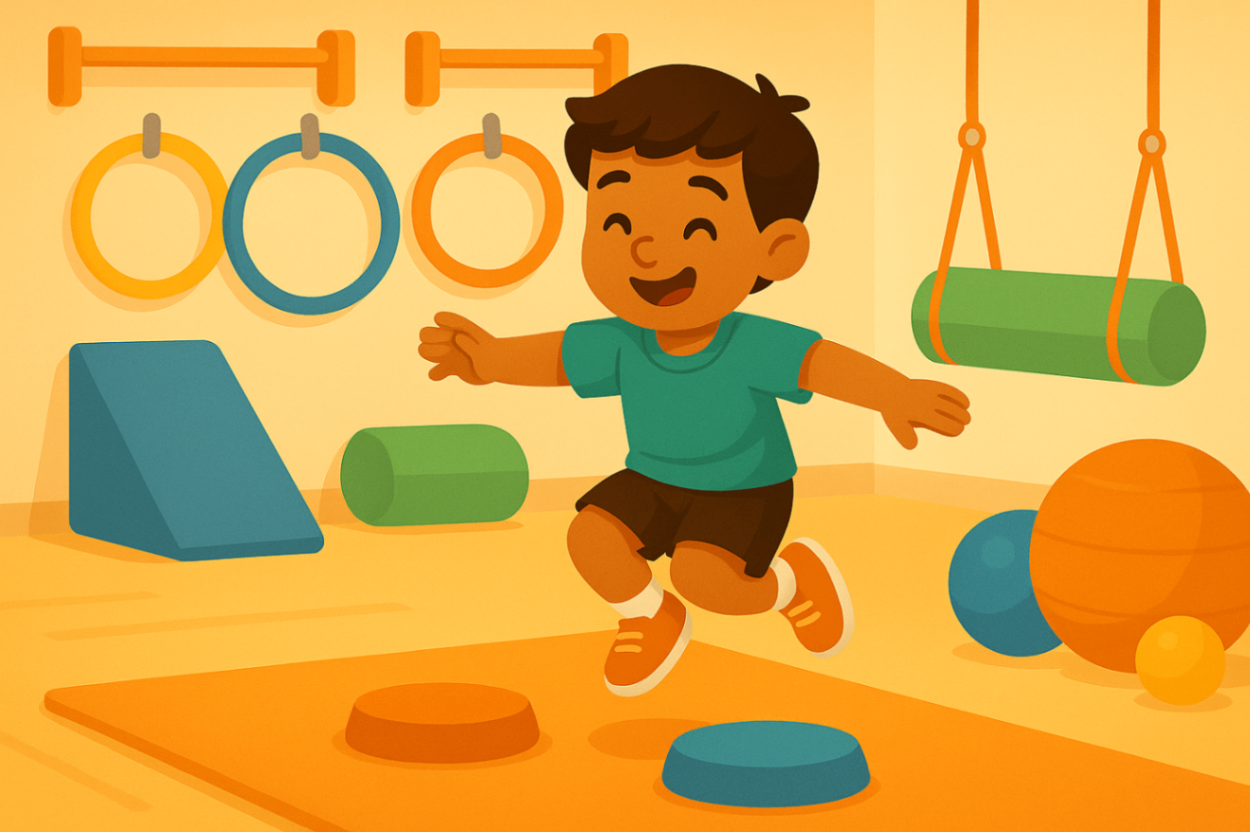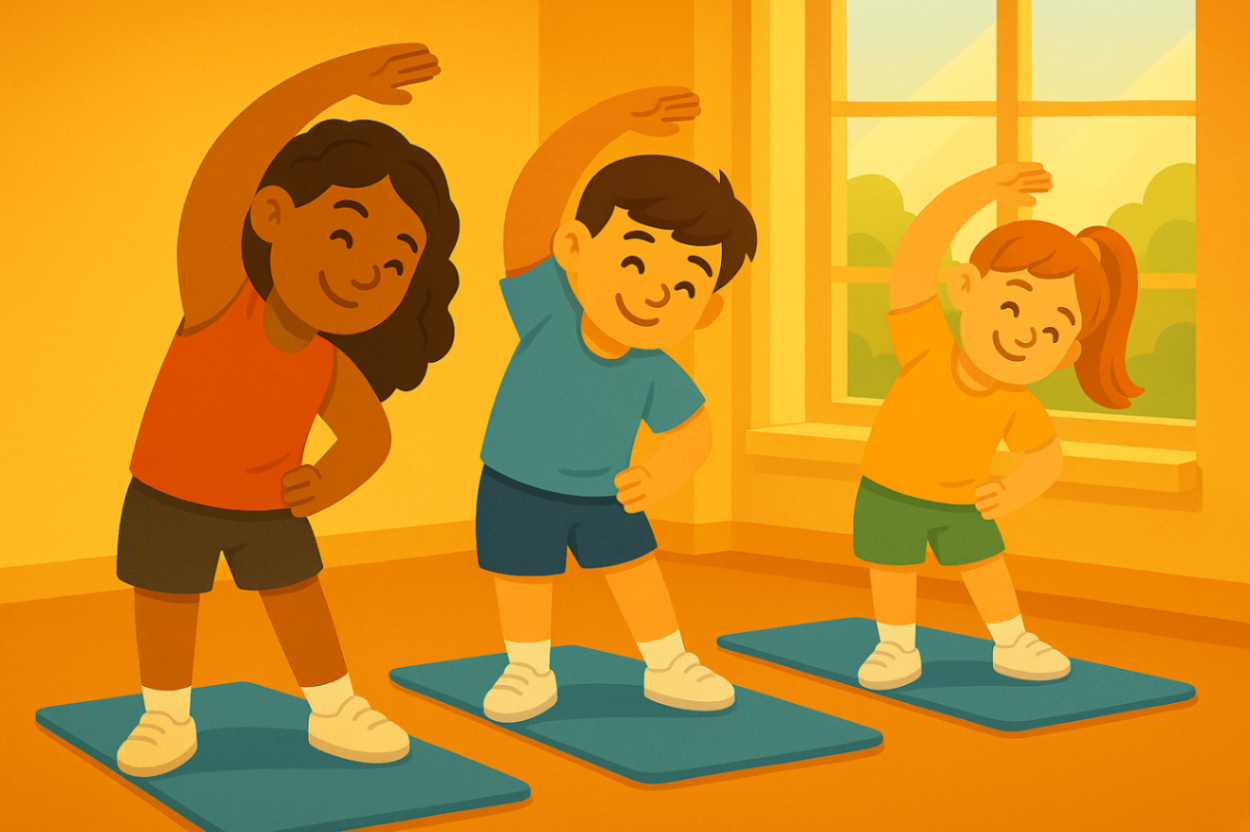
understanding exercise physiology: goals and key practices
14 July, 2025

Key Highlights
-
Exercise physiology examines how the human body responds and adapts to physical activity and varying levels of exertion.
-
Through a foundation in exercise science, it boosts health outcomes by promoting fitness, preventing diseases, and managing chronic conditions like cardiovascular or musculoskeletal disorders.
-
Certified exercise physiologists use tailored exercise prescriptions to enhance performance, endurance, and quality of life for individuals.
-
Core practices include assessment techniques, designing personalised programs, and supporting multidisciplinary team efforts in clinical care.
-
It focuses on muscle contraction, energy metabolism, and other systems to highlight the benefits of regular physical activity.
Introduction
When you exercise, the body goes through many changes. This is called exercise physiology. This field looks at how the body reacts to physical activity. It covers everything from changes in your cells to how you feel and your health outcomes. The people who study this help you meet your fitness goals. Maybe you want to have more endurance, heal after getting hurt, or stop long-term illness. Exercise physiology connects what you do when moving your body to better quality of life. The science helps us learn what works best for our health. Let’s look at the main things you need to know about it and how they help us.
For evidence-based strategies that support motor skills and participation at school and home, read Children’s Exercise Physiology in Liverpool.
Defining Exercise Physiology
 Exercise physiology is a part of exercise science. It looks at how the body works when you take part in physical activity. This field studies how different parts of your body, like cells and organs, change when you move and put stress on them. It covers things like weight control, getting fit, or helping the body heal after an injury. Exercise physiology brings together real world use and science so people can get better health outcomes.
Exercise physiology is a part of exercise science. It looks at how the body works when you take part in physical activity. This field studies how different parts of your body, like cells and organs, change when you move and put stress on them. It covers things like weight control, getting fit, or helping the body heal after an injury. Exercise physiology brings together real world use and science so people can get better health outcomes.
rts. It looks at things like how the muscles and heart respond and how energy is used during regular physical activity. People who do patient care measure things such as ATP to help set up good plans for workouts. This helps trainers and therapists find better ways to help you do well in sports, keep you active as you get older, and lower your risk of sickness. Exercise physiology makes sure health promotion and fitness plans are built on what we know works best.
Key Concepts in Exercise Physiology
Understanding muscle contraction is key in physiology. When a muscle gets an electrical signal, it starts to work. Adenosine triphosphate (ATP) gives the muscle energy. This energy helps actin and myosin, two parts inside the muscle, slide past each other so the muscle can contract. This job is important for movement and for making muscles stronger.
Another important thing in metabolism is energy metabolism. This gives you the power to do any physical activity. If you do a short, strong burst of exercise, your body uses energy without much oxygen, utilising anaerobic metabolism pathways. But if you keep moving for a long time, the body uses oxygen and switches to another way of making energy called the oxidative system. In both, fatty acids and glucose are the main things the body uses for fuel. ATP is made at different rates depending on how long or how hard you work.
ATP is not only the main energy currency in your body, but it also helps you keep going when you are active. How well you use ATP when you train, whether you are jogging slow (aerobic) or running fast (anaerobic), can change your performance and how quickly you get better after exercising. Learning about these energy systems helps professionals change workouts for strength, endurance, or recovery. From the cell level up to the whole body, physiology and metabolism show that using targeted physical activity can improve your quality of life.
How do factors like age, gender, and genetics influence exercise physiology?
Age, gender, and genetics significantly impact exercise physiology by affecting muscle composition, metabolism, and recovery rates. For instance, younger individuals may recover faster than older adults, while genetic predispositions can influence strength and endurance capabilities. Understanding these factors helps tailor exercise programs for optimal performance and health outcomes.
This related field links up with others like rehabilitation, sports medicine, and health care that tries to stop illness before it sta
The Goals of Exercise Physiology
 The main goal of exercise physiology is to help people improve their health and quality of life. Experts use what they know about physiology to make plans that fit each person. This covers things like better heart health, more strength, and good exercise performance.
The main goal of exercise physiology is to help people improve their health and quality of life. Experts use what they know about physiology to make plans that fit each person. This covers things like better heart health, more strength, and good exercise performance.
Exercise physiology also tries to stop people from getting sick and helps manage long-term health problems. It can help people stay active on their own for longer. In sports and medical settings, the aim is to make exercise a strong way to get better health outcomes and long-lasting energy in life.
Enhancing Physical Performance
One big goal in exercise physiology is to help people get better at endurance training and getting stronger. When you train to improve your skeletal muscle, you change things like how hard you work, how long you work out, and how much rest you get. This helps you raise your power output. These special training plans help your body bring in more oxygen and use energy better. As a result, athletes can do better in events where they compete.
When it comes to performance, the changes in skeletal muscle matter a lot. When your muscles face stress over and over from training, they grow bigger and stronger. This is called hypertrophy. With more mass, you get more strength. Also, using type II muscle fibers while you sprint or make quick moves helps your body make more explosive power.
How energy systems work in physical activity is also important for making training plans better. If you teach your body to use oxygen well—by swimming or cycling, for example—your exercise performance will last longer. Using these ideas, exercise physiology helps people follow the right programs for top fitness. This helps you get the most out of your endurance and physical activity.
Promoting Health and Preventing Disease
Regular physical activity is good for your health and helps stop diseases before they start. People who study physiology look at how the body works during movement. They make exercise plans to help with obesity and problems with the heart. When you stay active, you lower your risk of dying early and make your body stronger to fight off health problems.
A lot of focus is put on how the body uses food and sugar, which is called metabolism. Exercise improves insulin sensitivity and enhances glucose uptake. If you have diabetes, a plan made just for you can help you handle glucose better. Activity boosts energy metabolism and helps treat health issues without surgery or medicine.
When you keep up with regular physical activity, you get better health outcomes. People who stick to doing exercise often face fewer problems, like high blood pressure or sore muscles and bones. They also feel better in their mind and mood. The study of physiology helps make it clear how being active gives us a better chance at living longer. It also helps to keep health promotion and disease prevention a big part of patient care.
Core Practices in Exercise Physiology
 The daily work of exercise physiologists helps people reach their fitness and rehab goals. These experts do detailed assessments to know someone’s physical ability. Then, they make plans that fit what the person needs.
The daily work of exercise physiologists helps people reach their fitness and rehab goals. These experts do detailed assessments to know someone’s physical ability. Then, they make plans that fit what the person needs.
When they create patient care programs or handle their scope of practice, they use facts and data to guide what they do. With their training, certified exercise physiologists help support recovery, stop disease, and help people get better over time. They work in clinics and sports places to give people the best care.
Assessment and Evaluation Techniques
Clear assessment techniques are the base of good exercise physiology. Doctors and trainers use measurements like cardiac output, VO2 Max, and heart rate to understand how well someone’s body works. These numbers help people like you and me get programs that fit what we need.
A simple table shows how these different tests look:
|
Assessment Technique |
Parameter Measured |
Application |
|---|---|---|
|
VO2 Max |
Oxygen consumption |
Max aerobic ability until exhaustion |
|
Heart Rate Monitoring |
Beats each minute |
Heart’s response to exercise |
|
Six-Minute Walk Test |
Walking distance |
Safe test for patients |
Tools like VO2 Max and real walking distances took new steps with updated technology for exercise physiology. These help experts think about what anyone needs to get good results, like better heart rate and cardiac output. With these, they make plans that suit every person.
Designing Personalised Exercise Programs
Personalised exercise prescriptions help people get better results in fitness and to deal with their health needs in a unique way. A certified exercise physiologist designs programs for each person by looking at age, medical history, and goals. This helps make sure people get the best health outcomes.
Nutrition also plays a big role. Getting the right dietary guidance gives you more energy to use for different activities, like aerobic exercises and tough weightlifting. When you work on both your workouts and your nutrition, it helps you make steady progress and see longer-lasting changes.
When making a good program, it is important to keep track of data. This means looking at how people do during workouts and how fast they recover after them. This information helps to change and improve the plan. With a tailored program, people can turn their hard work into big life changes.
What does an Exercise Physiologist do
An exercise physiologist uses their knowledge in exercise science to help people be healthier. They check fitness levels and create workouts that are made just for you. By using proven ways to help, they give better patient care.
In some places like clinics, clinical exercise physiologists help people who have long-term illnesses. They work with people who have diabetes or heart problems. They use physical activity and do health promotion to help both the mind and the body. This helps people have better quality of life. Exercise physiologists help increase endurance, support recovery after injuries, and do work that makes community health better.
Clinical vs. Non-Clinical Settings
Exercise physiologists help many people in different places to meet their needs:
-
Clinical Settings: They help people recover from long-term illnesses such as problems with the heart.
-
Non-Clinical Roles: They work with athletes and sports teams. They make plans for fitness and high athletic performance.
-
Patient Care Continuity: They link healthcare and fitness together by using many skills.
-
Community Programs: They help to get more people to do regular physical activity to keep everyone healthier.
No matter where they work, the job is to make health better for every person and help with good health outcomes. They do this by creating the right health plan for everyone with a focus on physical activity, patient care, and regular physical activity.
Collaboration with Other Health Professionals
Collaboration plays a big part in exercise physiology. When people in this field work with allied health teams, physical therapy experts, and dietitians, they can make care plans that look at all parts of a person's health. This kind of multidisciplinary team helps make sure fitness goals fit well with bigger health needs.
These partnerships help everyone get a better idea about things like energy metabolism and managing long-term sickness. This leads to better patient recovery and can also help athletes do better. Working together is key whether the goal is to help with injury recovery or to handle body-wide problems. Teamwork can grow the scope of practice for all involved in this field of physiology and metabolism.
Key Physiological Systems Involved in Exercise
Many parts of the body work when you do physical activity. The cardiovascular system is important. It helps the body get oxygen and gets rid of waste. The muscular system helps the body by building strength, endurance, and muscle mass. Your muscles get bigger and stronger with use.
Metabolism also has a key role. It helps the body use energy well. This is important when you move a lot or when you rest after hard work. Knowing how these systems work can help you get more out of regular physical activity. You will get better health results if you use this knowledge in your daily life.
Muscular and Skeletal System Adaptations
Resistance and aerobic exercises can make big changes in your skeletal muscle and bone density. Type II muscle fibers help you with short, strong efforts. Type I muscle fibers are better for endurance. As you train, your muscles can get bigger, so you have more power.
Exercise also makes your bones stronger, raising bone density. It lowers the chance of bone breaks. If you do high-impact activities when you are young, the good effects can go up. This helps keep away musculoskeletal problems like osteoporosis.
If you do targeted workouts that use both muscles and bones, you get the best results for health. Doing both can help you in the long run with your quality of life, making every day well.
Cardiovascular and Respiratory Responses
The cardiovascular system helps you do more by making your heart rate go up and by raising cardiac output. Blood flow goes mostly to the muscles that are working the hardest and this helps get oxygen to them fast. During tough exercise, red blood cells change to bring more oxygen to these areas.
The respiratory system makes you breathe faster and deeper, so you take in more air. When plasma volume increases, it helps control body temperature and enhances skin blood flow, helping with moving nutrients and taking away waste. Working together, these systems make sure you perform well, no matter if the activity is moderate or very hard.
When you keep doing aerobic and anaerobic activities, your body gets better at all this over time.
Conclusion
Understanding exercise physiology is important if you want to get better at physical activity and be healthy. Exercise physiologists look at the main body systems that change when you move or work out. With this knowledge, they make personal plans that fit what you need. This gives the best results whether you train at a gym, play sports, or recover from injury. By checking how the body works, these experts help with health problems and make your quality of life better. People work with exercise physiologists in hospitals, clinics, or even at home. This role helps make the world healthier for everyone.
If you want to learn how physiology and exercise can help you or make your life better, get in touch for a talk with our experts.
Frequently Asked Questions
What qualifications do you need to become an exercise physiologist in Australia?
To work as an exercise physiologist in Australia, you must have a degree in exercise science or a related field. You also need certification from ESSA. This helps with official recognition and can lead to better jobs. For some types of patient care, you might also have to do clinical training.
What are the responsibilities of an exercise physiologist?
An exercise physiologist works to help people improve their quality of life. They take part in health promotion, check a patient's health, and create exercise plans for them. After someone gets hurt or sick, they help with getting better by making sure the person’s quality of life goes up. The exercise physiologist also collects information to help make treatments safer, and to see if what they are doing works well.
Why would someone see an exercise physiologist?
People go to an exercise physiologist if they have ongoing problems like heart trouble or injuries. They also see them when they want to get more out of physical activity and get better health outcomes. Exercise physiologists help people build up their endurance, strength, and movement. All this can help them have better quality of life over time.
What can exercise physiologist treat?
Exercise physiologists help people with many health problems. These problems can be heart disease, obesity, diabetes, and muscle or bone injuries. They make special exercise plans for each person. This supports better health and helps your body work the way it should. It can also help you get better and feel good in your daily life, even if you live with a long-term illness or disability. Their goal is to improve the quality of life for all their patients.
Is exercise physiology covered by Medicare or private health insurance?
In Australia, you can get exercise physiology covered by Medicare or private health insurance if you have the right referral. The amount covered will depend on your insurance policy. Most of the time, if your care is certified, you will be able to get some money back. Always check with your insurance provider to know what is included for exercise physiology.
.svg)












